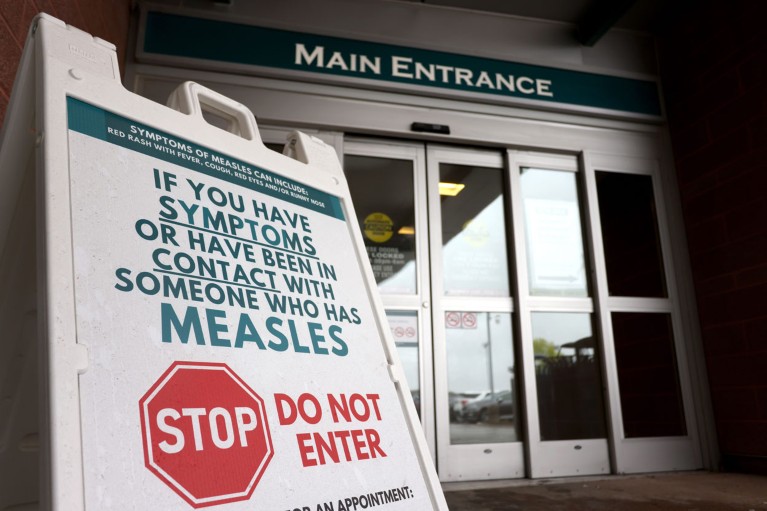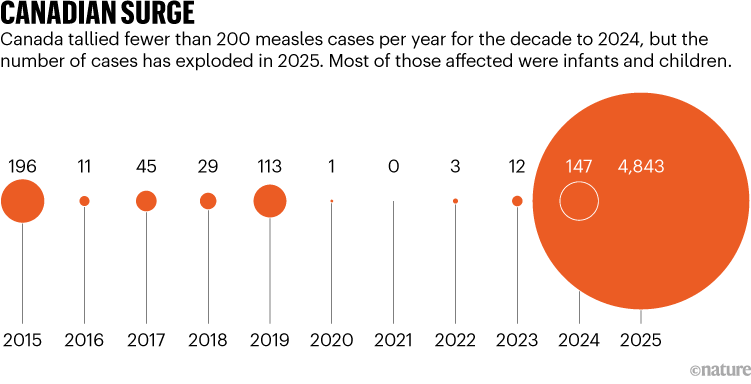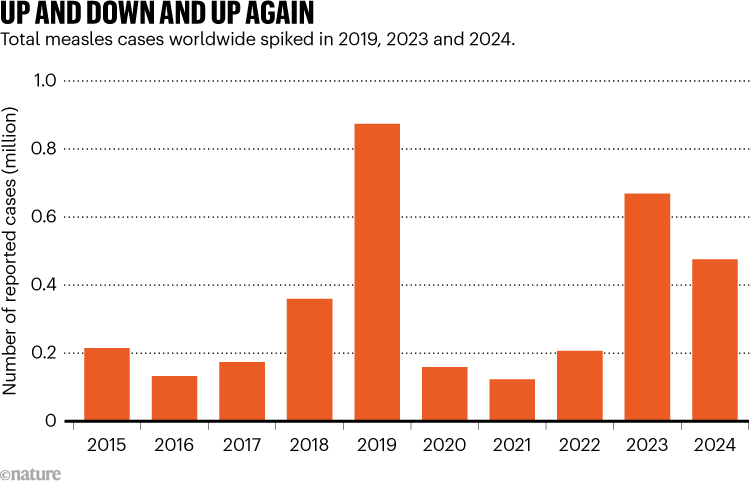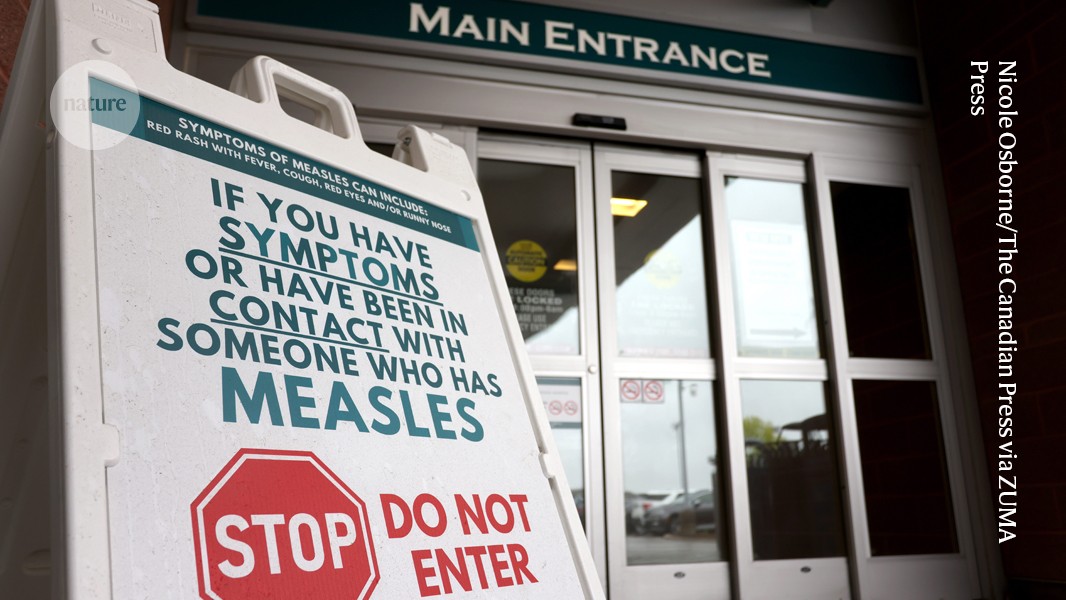
People with measles are barred from entering a hospital in Canada, which has seen a surge in cases of the highly infectious disease in 2025.Credit: Nicole Osborne/The Canadian Press via ZUMA Press
A surge in measles cases has cost Canada its official measles free designation — and the United States looks likely to follow suit.
The spike in Canada’s measles rate has been dramatic: so far, there have been 4,843 confirmed cases in 2025, up from just 147 cases in 2024 (see ‘Canadian surge’). Meanwhile, the United States has had more than 1,720 confirmed cases this year, more than in any year in the past three decades. If the disease continues to spread until January 2026, the United States could lose its ‘measles elimination’ status — a label applied to regions that have had no endemic measles transmission for at least 12 months — early next year.

Source: Health Infobase, Government of Canada
Public-health officials say that the surge in cases in North America is concerning, and possibly a sign of worse things to come. But these outbreaks are not unprecedented in the broader picture.
The global number of measles cases was much higher in 2019 (see ‘Up and down and up again’), when Africa was hit hard by outbreaks. And 2024 was particularly bad in Europe; the region saw double the number of measles cases it recorded in 2023, and the United Kingdom declared a national incident.

Source: World Health Organization
Health officials around the world have been trying to quash measles for decades, with variable success. Countries and regions come and go from the measles-free list frequently. “Elimination is a fragile state,” says William Moss, an epidemiologist at the Johns Hopkins Bloomberg School of Public Health in Baltimore, Maryland.
The Americas became the first — and, so far, only — World Health Organization (WHO) region to be declared measles-free, in 2016, but this status didn’t last long, thanks to an outbreak in Venezuela in 2018 that spread to Brazil. The region clawed back its status in 2024, but has now lost it again, thanks to the 10 November decision about Canada, made by the Pan American Health Organization.
High bar
The WHO recommends that countries vaccinate 95% of children with two doses of measles-containing vaccine. Few countries hit that mark: in the European Union in 2023, for example, only four countries achieved it. “That’s an aspirational goal. A country can eliminate measles without 95% coverage,” notes Moss; outbreaks tend to happen in communities in which the coverage is much lower than the national average.
Globally, the rate of measles vaccination with one dose — which provides some protection — has hovered between 81% and 86% for more than a decade, and is currently recovering from a dip that occurred during the pandemic as a result of disruptions in vaccine delivery (see ‘Widespread protection’). Many countries, including the United States and Canada, maintain a rate of around 90% for one dose.

Source: UNICEF


